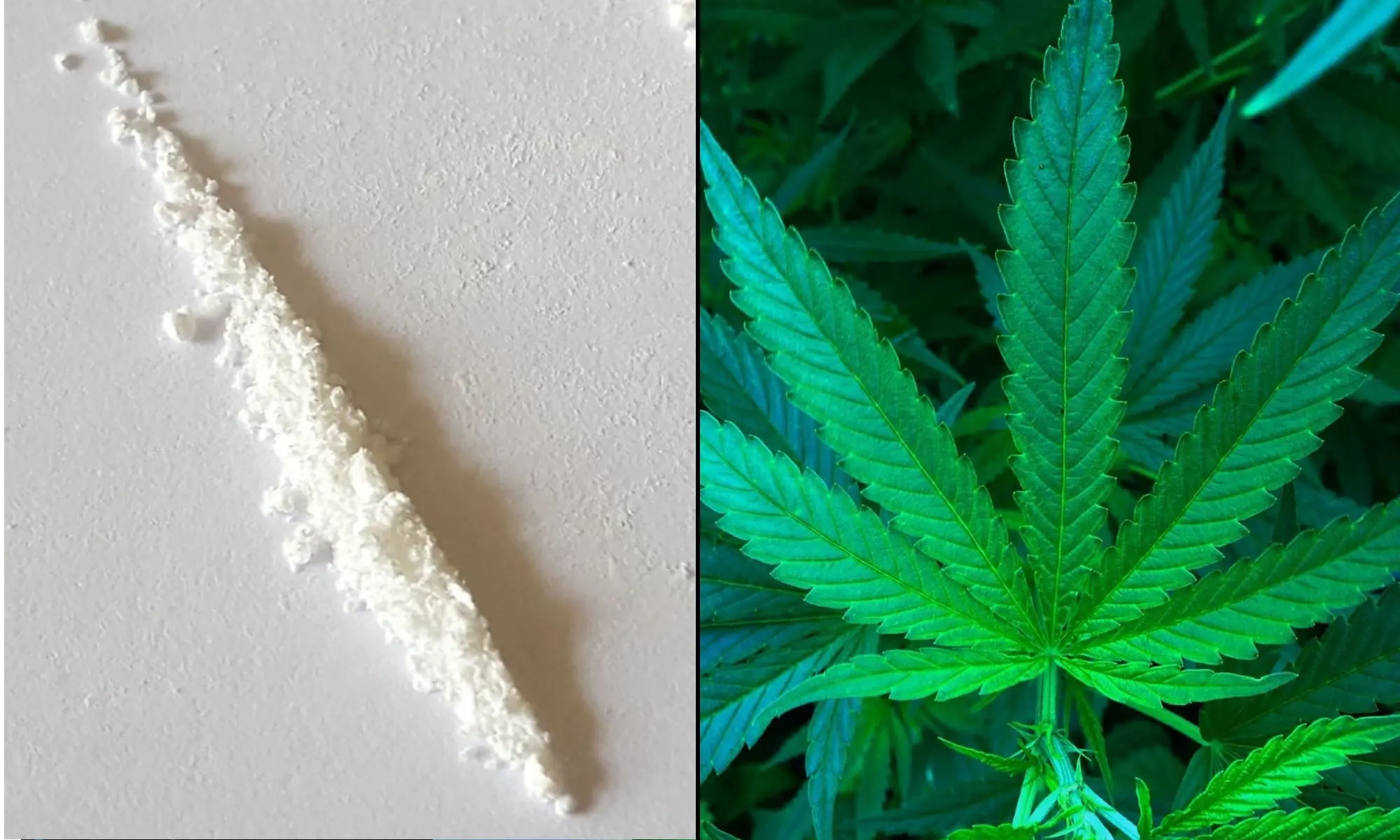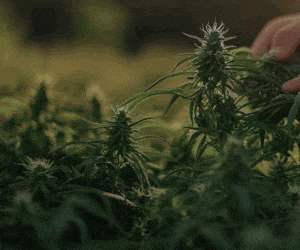Science & Health
Government-Backed Study From Japan Finds No Evidence That Marijuana Is A ‘Gateway Drug’

A new study looking into patterns of drug use in Japan casts further doubt on the notion that marijuana is a gateway drug, concluding that cannabis use in the country usually comes after people first use alcohol and tobacco, and that they rarely go on to use other substances.
Published this month in the journal Neuropsychopharmacology Reports, the research—which authors describe as “one of the largest and most significant studies on community-based cannabis users in Japan to date”—also found that nearly half of respondents who reported marijuana as their third drug “did not go on to use other substances afterward.”
“Cannabis use in Japan typically follows alcohol and tobacco, and rarely leads to further drug use,” concludes the report, which was supported by the Japanese Clinical Association of Cannabinoids and the government’s Ministry of Health, Labour and Welfare. “These findings challenge the gateway hypothesis in the Japanese context.”
The research acknowledges that cannabis “is often labeled a ‘gateway drug,'” but it notes that “strong causal evidence for progression to other substances is limited.”
Its findings suggest that rather than cannabis use itself leading to other drug use, “shared vulnerabilities”—involving factors like age, educational background and socioeconomic status—”and strict drug policies may shape these patterns.”
The study consisted of an anonymous survey conducted in January 2021, asking 3,900 people in Japan who had used cannabis in their lifetimes about other substance use. Researchers then analyzed the data to assess the chances of people using other drugs after trying marijuana.
“Rather than implying a causal gateway effect of cannabis use,” authors wrote, “results highlight the importance of considering the broader life context in which substance use occurs. Social determinants such as age cohort, educational background, and socioeconomic position appear to shape patterns of substance progression independently of the pharmacological properties of cannabis.”
Authors’ assessment of the responses found that “Odds for subsequent use of alcohol, tobacco, methamphetamine, and other illicit drugs after cannabis use were 1.25, 0.77, 0.08, and 0.78, respectively, suggesting low probabilities of progression.”
While the results did show some correlations between lifetime marijuana consumption and use of some other drugs, such as methamphetamine, the 12-person team said that the findings failed to establish causality—the core claim of the gateway drug theory.
“Our survey revealed that 10.4% of cannabis users reported experience with methamphetamine, a figure considerably higher than the estimated lifetime methamphetamine use prevalence of 0.5% in the general Japanese population,” the report says. “This suggests that cannabis users may indeed have higher exposure to other illegal drugs, though this does not establish causality.”
Instead the study points to so-called “common liability theory,” under which “the observed order and relationship between substances result not from one drug directly leading to another, but from shared underlying factors—such as genetic, psychological, and social influences—that predispose individuals to multiple substance use.”
“In Japan,” explains the team, “strict cannabis regulations may contribute to a situation where cannabis and other illegal drugs circulate within the same black market, increasing users’ exposure to various substances. Thus, it may be the regulatory environment, rather than the pharmacological properties of cannabis itself, that creates a ‘gateway’ effect.”
One finding that further supports that theory, notes the report, are lifetime cannabis users’ “relatively lower rates of use of legal substances, such as benzodiazepines and prescription drugs, in our sample.”
Authors did note some limitations in the study, for example the self-selective nature of the online survey on social media and the recruitment of people who reported specifically lifetime cannabis use rather than the use of other drugs.
“To overcome these limitations,” they wrote, “future large-scale cohort studies involving the general population will be essential.”
But at least based on the results of the current survey, the new report ends, “we did not observe patterns that support the gateway drug hypothesis.”
Meanwhile in the United States, a study last year found that the legalization of adult-use marijuana did not appear to be a contributor to what authors called “substantial increases” in Schedule II stimulant use across the country in recent years. In fact, there was even evidence that cannabis legalization reduced stimulant use through a substitution effect.
Authors of that study said the finding that ending marijuana prohibition isn’t linked to rising stimulant rates was contrary to what they expected when undertaking the project. The team predicted that legalizing recreational cannabis would lead to increases in stimulant use but found no evidence for that effect.
While cannabis is often labeled a gateway drug by critics, a number of studies show that marijuana may in fact be acting more as a substitute for certain drugs, at least among some subsets of users.
A survey released by the American Psychiatric Association (APA) and Morning Consult in 2023 found that Americans considered marijuana to be significantly less dangerous than cigarettes, alcohol and opioids—and they said cannabis is less addictive than each of those substances, as well as technology.
A separate Gallup survey also found that Americans considered marijuana to be less harmful than alcohol, cigarettes, vapes and other tobacco products.
As for alcohol, a study published in November 2023 found that marijuana legalization may be linked to a “substitution effect,” with young adults in California “significantly” reducing their use of alcohol and cigarettes after the cannabis reform was enacted.
Recent research out of Canada also found a link between marijuana legalization and declines in beer sales, suggesting a substitution effect where consumers shift from one product to the other.
Other studies have linked cannabis legalization with reductions in the use of both prescription and nonprescription opioids. A report published last November, for example, linked legalizing medical marijuana with a “lower frequency” of nonprescribed pharmaceutical opioid use.
A 2023 federally funded study found that marijuana was significantly associated with reduced opioid cravings for people using them without a prescription, suggesting that expanding access to legal cannabis could provide more people with a safer substitute.
A separate study that year found that legal access to CBD products led to significant reductions in opioid prescriptions, with state-level drops of between 6.6 percent and 8.1 percent fewer prescriptions.
Another linked medical marijuana use to lower pain levels and reduced dependence on opioids and other prescription medications, while yet another, published by the American Medical Association (AMA), found that chronic pain patients who received medical marijuana for longer than a month saw significant reductions in prescribed opioids.
AMA also released research showing that about one in three chronic pain patients report using cannabis as a treatment option, and most of that group has used cannabis as a substitute for other pain medications, including opioids.
State-level marijuana legalization is associated with major reductions in prescribing of the opioid codeine specifically, too, according to a study that leveraged data from the federal Drug Enforcement Administration (DEA).
A 2022 study similarly found that giving people legal access to medical cannabis can help patients reduce their use of opioid painkillers, or cease use altogether, without compromising quality of life.
There’s also no deficit of anecdotal reports, data-based studies and observational analyses that have signaled that some people use cannabis as an alternative to traditional pharmaceutical drugs like opioid-based painkillers and sleep medications.
Image element courtesy of Dominic Milton Trott.



